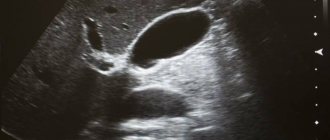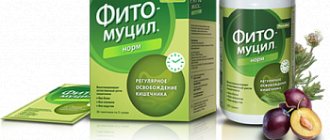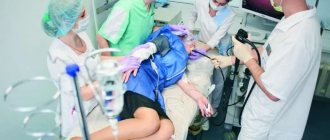2-3 days before a colonoscopy, it is necessary to exclude from the diet foods rich in fiber vegetables (carrots, beets, potatoes, cabbage, radishes, cucumbers, tomatoes, onions, etc.) in any form, both fresh and cooked, and also fruits and berries, jam, compotes, milk, black bread, legumes, mushrooms. It is necessary to exclude millet and pearl barley porridge from cereals. It is allowed to eat boiled meat, fish, and poultry; you can have cheese, cottage cheese, broths without vegetables, tea, coffee, crackers, porridge without milk. If you suffer from constipation, you need to take the laxatives you usually use every day. You can even slightly increase their dose.
On the eve of the study (24 hours before the procedure), it is recommended to adhere to a strict “liquid” diet, which excludes the consumption of any other foods other than “light liquids”. The concept of "light liquid"
includes water, solids-free soups, pulpless fruit juices, tea and coffee, clear carbonated and non-carbonated soft drinks.
If you suffer from constipation, it is recommended to start taking the laxatives you usually use 2 days before the test. You can even slightly increase their dose.
Morning appointment for colonoscopy
Day before the procedure
At 7 a.m., instead of breakfast, drink at least 1 glass of “light liquid” (including soups freed from solid particles, fruit juices without pulp, tea and coffee, clear carbonated and non-carbonated soft drinks) or water.
The first dose of the drug should be taken immediately after breakfast. The contents of 1 bottle (45 ml) should be dissolved in half a glass (120 ml) of cold water. Drink the prepared solution and wash it down with one (or more) glass (240 ml) of cold water.
At 1 p.m., instead of lunch, you should drink at least 3 glasses (720 ml) of “light liquid” or water.
At 19:00, instead of dinner, drink at least 1 glass of “light liquid” or water.
The second dose of the drug should be taken immediately after dinner. The contents of the second bottle (45 ml) should be dissolved in half a glass (120 ml) of cold water. Drink the prepared solution and wash it down with one (or more) glass (240 ml) of cold water.
If desired, you can drink more liquid. “Light liquids” and water can be drunk until midnight.
This drug usually causes bowel movements within half an hour to 6 hours.
Colonoscopy (derived from Latin сolon - large intestine and Greek σκοπέω - look) is a diagnostic medical procedure, during which an endoscopist examines and evaluates the condition of the inner surface of the colon using a special instrument - an endoscope (colonoscope). Modern equipment makes it possible to detect even small changes in the intestinal mucosa during colonoscopy. The treatment capabilities of our department and the qualifications of our specialists allow us to remove polyps of any size without complications - from 1 millimeter to 8-10 centimeter giant polyps. Immediately after removal of the polyp, it can be examined and determined whether it is completely benign or has already begun to degenerate into cancer.
The words endoscope and colonoscope are synonyms. A colonoscope is a flexible endoscopic device in the form of a narrow flexible tube, specially designed for examining the colon; it is slightly longer than a gastroscope (a device for examining the stomach) and slightly thicker. At the end of the colonoscope there is a video camera and lighting. The tip of the device is flexible and movable; the doctor controls it from the handle using a system of levers and rods located inside the endoscope.
This examination method allows visualization of the entire colon, including the final portion of the small intestine. Various intestinal diseases, colon cancer, rectal cancer, polyps in the intestines - this is just an incomplete list of the most common reasons to perform a colon examination - colonoscopy.
If the doctor finds polyps during the procedure, he can remove them immediately or take tissue samples for further histological analysis. Also, during an endoscopic examination, the doctor can indirectly assess the functional activity of the intestine.
In addition, colonoscopy is performed to remove early forms of cancer, identify and eliminate the source of bleeding, and also to remove foreign bodies.
In order to reduce discomfort, local anesthetic ointments and gels are used. The procedure is carried out using the most modern equipment from Olympus (Japan).
How to prepare for a colonoscopy.
The success and information content of the study is determined mainly by the quality of preparation for the procedure, so pay the most serious attention to following the preparation recommendations. Remember, in order for the doctor to be able to examine the mucous membrane of the colon in detail and thoroughly, it is necessary that there are not even traces of feces in its lumen.
Correct and thorough bowel preparation for examination facilitates a thorough examination and leads to the correct diagnosis.
Below are recommendations on how to properly prepare for an endoscopic examination of the colon - conoscopy and preparation plans for an endoscopic examination of the intestine.
You can choose any of 4 drugs:
- Fortrans
- Fleet Phospho-soda
- Lavacol
- Picoprep
- Moviprep
When using the above medications, there is no need to do enemas!
We remind you once again about the need to exclude any vegetables 3 days before the test (you can only have a few boiled potatoes without peel, you can also use mousse /i.e., punched in a blender/ from ½ banana) and fruits, brown bread (especially grain bread), nuts , porridge (you can only use rice).
General recommendations on diet and regimen:
On the day of preparation (i.e. on the day preceding the study) light breakfast - tea/coffee/juice + white bread, butter + low-fat cottage cheese/yogurt without additives, for lunch you can eat broth “empty” or with noodles, boiled meat, fish, chicken, cheese, white bread, butter, cookies, yogurt without additives, then the actual preparation. Lunch no later than 2 hours before the start of preparation. On the day of preparation, the intake of clear liquids (including juices without pulp) is not limited, both before, during and after preparation. If you suffer from constipation, you need to take the laxatives you usually use every day. You can even slightly increase their dose. There is no need to sit in front of a glass of liquid to prepare - if your health allows, between drinks, move, walk, periodically performing simple gymnastic exercises such as “charging” (bending, stretching, raising your arms up, squats, body rotations, etc.). If you have already prepared with one of the drugs before and the doctor at the study said that the preparation was good, prepare according to the same scheme with the same drug - there is no need to experiment.
*******
drug "Fortrans"
Dissolve 1 sachet of FORTRANS® in 1 liter of water, take 1 liter of solution within 1 hour (3 or 4 hours, respectively, depending on the number of sachets required for your weight), approximately 1 glass every 15 minutes. One pharmaceutical package of FORTRANS contains 4 sachets.
For a patient weighing up to 70 kg, 3 sachets are used; for heavier weights, all 4 sachets must be used. Use water at room temperature to prepare the solution (sparkling water cannot be used). To improve the taste, you can drink it with sour juice without pulp. If you experience nausea while taking FORTRANS, stop taking the drug for half an hour. After 1-2 hours from the start of taking the drug, you will have loose stools, bowel movements will be completed 1-2 hours after the last dose of FORTRANS. If it seems to you that bowel cleansing was insufficient after 3 packets, use the 4th one or drink an additional 1 liter of any clear liquid (at least drink water without gas). In most cases, taking 4 liters of FORTRANS is a guarantee of good bowel preparation for colonoscopy.
The optimal time to start preparation is 16.00-17.00 on the day before the procedure.
When using the drug Fortrans®, there is also no need to do enemas on the day of the study!
*******
drug "Fleet phospho-soda"
If a colonoscopy is scheduled for the first half of the day (before 12 noon)
Day before the study
7:00 At 7 a.m., instead of breakfast, drink at least 1 glass of light liquid (water or filtered meat broth, fruit juices without pulp (except red or purple juices), tea or coffee without milk, non-carbonated refreshing drinks). Immediately after this, dissolve the contents of 1 bottle of Fleet Phospho-soda (45 ml) in half a glass (120 ml) of cool water. Drink the prepared solution and wash it down with 2 glasses (500 ml) of cool water.
13:00 At 13:00, instead of lunch, you should drink at least 4 glasses (1 l) of light, light liquid.
19:00 At 19:00 instead of dinner, drink at least 2 glasses of light liquid. Immediately after this, you should dissolve the contents of 1 bottle of Fleet Phospho-soda in half a glass (120 ml) of cool water. Drink the prepared solution with 1 glass of cool water, and then drink another 1 liter of water within 1 hour. If desired, you can drink more liquid. Light liquids can be drunk without restriction until midnight.
If the colonoscopy is scheduled for the second half of the day (after 12 noon) and will be performed without anesthesia.
Day before the study 13:00 At 13:00 you can have a light snack during lunch. After lunch, you should not eat any solid food. 19:00 At 19:00, instead of dinner, you should drink 2 glasses of light liquid (water or filtered meat broth, fruit juices without pulp (except red or purple juices), tea or coffee without milk, non-carbonated refreshing drinks). Immediately after this, you should dissolve the contents of 1 bottle of Fleet Phospho-soda in half a glass (120 ml) of cool water. Drink the prepared solution and wash it down with 2 glasses (5000 ml) of cool water. During the evening, you should additionally drink at least 1 liter of light liquid. If desired, you can drink more liquid.
7:00 At 7 am, instead of breakfast, you should drink 2 glasses of light liquid. If desired, you can drink more liquid. Immediately after this, you should dissolve the contents of 1 bottle of Fleet Phospho-soda in half a glass (120 ml) of cool water. Drink the prepared solution and wash it down with 2 glasses (500 ml) of cool water.
In our department, it is possible to perform a colonoscopy “in your sleep” - the patient sleeps during the examination and does not experience any discomfort or pain.
This way the procedure is completed as quickly and efficiently as possible.
How to prepare for a colonoscopy: diet
The main task of preparation is to free the intestines from toxins and feces. That is why fatty foods, foods rich in fiber, sweets, and coffee should be excluded from the diet. You should also stop taking antidiarrheal medications.
What can you eat before a colonoscopy?
- low-fat fermented milk products;
- boiled lean fish and meat (veal, chicken breast);
- juices, compotes, jelly;
- rice, buckwheat, bread (wholemeal flour).
48 hours before the procedure, you must strictly follow a diet. On this day the menu may be something like this:
Option 1:
- breakfast: steamed vegetables seasoned with olive oil, non-carbonated mineral water or weak green tea;
- lunch: vegetable soup, rice;
- afternoon snack: a cup of low-fat kefir (or unsweetened yogurt);
- dinner: boiled fish, compote or jelly with a minimum amount of sugar.
Option 2:
- breakfast: low-fat cheese with bread (whole flour), weak green tea with a spoon of honey;
- lunch: low-fat meat broth, boiled rice with steamed fish, compote;
- low-fat cottage cheese and kefir.
In the last 24 hours before the procedure, you need to drink more fluids and it is better to give preference to liquid foods. These can be vegetable soups, low-fat kefir, liquid porridge with skim milk or water. The last meal in preparation for intestinal colonoscopy should be no later than 15-16 hours on the day before the examination. For dinner you can have tea, still mineral water or low-fat kefir.
Such fasting not only guarantees a thorough cleansing of the intestines before the examination, but also the removal of toxins from the body. This will help improve your overall health and well-being, as well as get rid of a couple of extra pounds.
Do not forget that even such a short-term diet is stressful for the body and you need to return to your usual diet gradually. You should not immediately after the examination binge on food or load your intestines with fatty and “heavy” foods.
Sources
- Papadopoulos T. Commentary on: Injectable Filler Technique for Face Lifting Based on Dissection of True Facial Ligaments. // Aesthet Surg J - 2021 - Vol - NNULL - p.; PMID:33782682
- Cong LY., Duan J., Luo CE., Luo SK. Injectable Filler Technique for Face Lifting Based on Dissection of True Facial Ligaments. // Aesthet Surg J - 2021 - Vol - NNULL - p.; PMID:33300562
- Rohrich RJ, Narasimhan K. Long-Term Results in Face Lifting: Observational Results and Evolution of Technique. // Plast Reconstr Surg - 2021 - Vol138 - N1 - p.97-108; PMID:27348643
- Sahawatwong S., Sirithanabadeekul P., Patanajareet V., Wattanakrai P., Thanasarnaksorn W. A Novel Technique of Supra Superficial Musculoaponeurotic System Hyaluronic Acid Injection for Lower Face Lifting. // J Clin Aesthet Dermatol - 2021 - Vol9 - N2 - p.58-62; PMID:27047633
- Narasimhan K., Ramanadham S., Rohrich RJ. Reply: Face Lifting in the Massive Weight Loss Patient: Modifications of Our Technique for This Population. // Plast Reconstr Surg - 2015 - Vol136 - N3 - p.389e; PMID:26057024
- Valente DS., Padoin AV., Zanella RK. Face Lifting in the Massive Weight Loss Patient: Modifications of Our Technique for This Population. // Plast Reconstr Surg - 2015 - Vol136 - N3 - p.388e; PMID:25989299
- Narasimhan K., Ramanadham S., Rohrich RJ. Face lifting in the massive weight loss patient: modifications of our technique for this population. // Plast Reconstr Surg - 2015 - Vol135 - N2 - p.397-405; PMID:25626786







